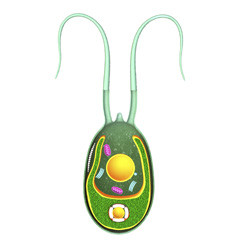Nitrogen and symbiosis in plankton
This process is known as nitrogen fixation, and serves an important ecological function by channelling environmental nitrogen into the food web. A newly discovered group of marine nitrogen fixers called diazotrophs work in symbiosis with other microorganisms called ciliates to fix nitrogen in the ocean. The EU-funded 'Evolution of symbiosis between ciliates and nitrogen-fixing prokaryotes' (SYMNIF) project aimed to investigate the symbiosis between diazotrophs and their hosts. Over 100 different samples of ciliates (a type of zooplankton) were collected from the North Atlantic and tested for the presence of diazotroph symbionts. Almost half of the ciliates tested harboured a nitrogen-fixing symbiont. Tests on five years' worth of cultivated zooplankton showed that the same diazotroph species was present in many different types of ciliate. Samples collected in spring and summer showed more symbionts than during winter, likely due to nitrogen depletion in seawater over summertime. However, adding nitrogen to growing zooplankton did not influence the nitrogen fixation rate, showing that the diazotrophs were not free-living species. The SYMNIF project shed light on an important group of marine microorganisms for the first time. Understanding how these symbiotic microorganisms work together to trap nitrogen will help researchers better understand global nitrogen flows.
Keywords
Symbiosis, marine microorganisms, nitrogen fixation, diazotrophs, ciliates







